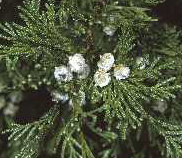 |
On-line Proceedings of the
2009 Atlantic White-Cedar Symposium
The Ecology and Management of
Atlantic White-Cedar (Chamaecyparis thyoides) Ecosystems
A Symposium held on June 9, 10, and 11, 2009 at the
City Hotel and Bistro in Greenville, North Carolina - USA |
Forest Metrics of Four Atlantic White Cedar Swamp Sites Managed in the National Wildlife Refuge System.
Jeffrey DeBerry, Geo-Marine, Inc.; Robert B. Atkinson, Christopher Newport University.
Presented by Jeffrey DeBerry
Extensive logging, ditching and agricultural conversion of Atlantic white cedar (cedar) swamps has led to a dramatic decline in acreage across its range and increased focus upon management of existing stands. In this study, an intermediate (20-35 years) and mature (60-70 years) stand from Great Dismal Swamp National Wildlife Refuge and Alligator River National Wildlife Refuge were selected for comparison of common forest metrics. Diameter at breast height (dbh), stem density, canopy closure, canopy height and depth to water table were measured in randomly located plots at each site in 1999. Aboveground biomass, basal area, density and other forest metrics were extrapolated to the hectare basis for comparison among sites and to other published estimates. Growing season mean water table levels were at or near the surface at AR sites but were greater than 30 cm below the soil surface at DS sites. Total aboveground biomass was similar within age classes, but was distri! buted differently. Mean cedar dbh and canopy height was greater at DS sites, while live stem density and canopy closure was greater for AR sites. Acer rubrum L. comprised a greater relative percent biomass and basal area at DS sites, which were partially drained in comparison to AR sites. Though drainage can generate higher timber yield, increased competition from other species may lead to eventual conversion of cedar stands. Management efforts should focus upon reversing historic drainage and fostering sufficiently high cedar stem densities during cedar stand re-establishment to improve success.
Proceedings Table of Contents and Conference Links
